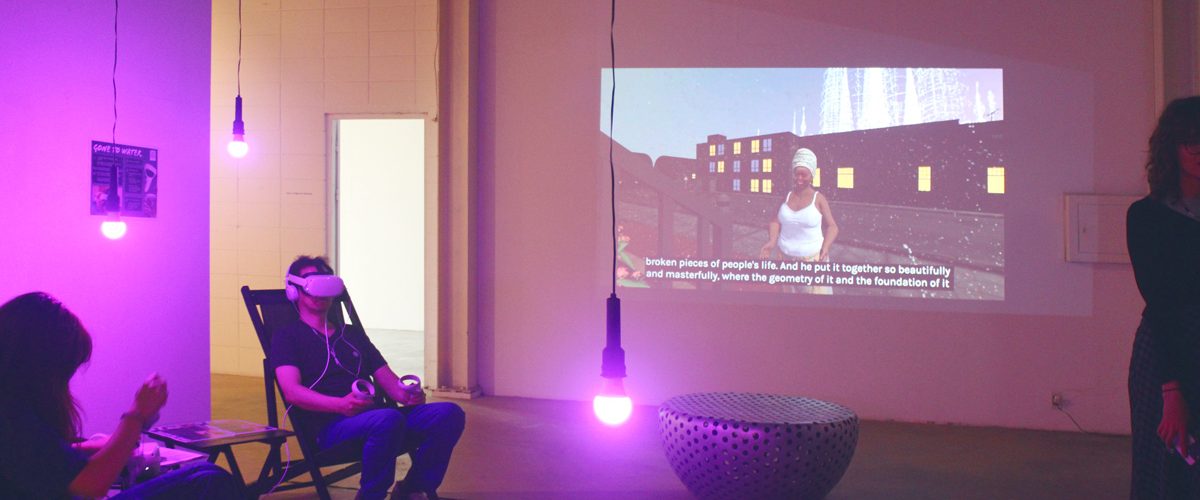디지털 시대의 예술을 기념하는 CICA NMAC 2024
정혜성
CICA미술관은 2024년 6월 29일부터 7월 1일까지 3일간 국제 뉴 미디어 아트 컨퍼런스(이하 ‘CICA NMAC 2024’)를 개최하였다. CICA미술관 김리진 디렉터는 개관 이래 미술관의 모든 국제 컨퍼런스와 심포지엄을 적극적으로 기획하고 추진해왔다. 특히 이번 CICA NMAC 2024에서는 한국, 영국, 미국, 브라질, 중국, 폴란드, 네덜란드 등 14개 국가에서 27명의 뉴 미디어 아티스트 및 연구가가 작품 및 프로젝트를 발표했다. 디지털 아트가 세계적으로 각광받는 현 시대에, 디지털 아트와 동시대 이슈를 이끌어내고 서로의 담론을 공유할 수 있는 컨퍼런스가 개최된 것은 의미가 크다.
오프닝 파티에서 김포문화재단 후원 음악가 바이올리니스트 김빛날윤미의 공연이 이어졌다. 아티스트들은 뉴미디어 작품을 참가자들에게 발표하는 시간을 가졌다. 동시대 예술 담론을 이끌며 ESG에 관한 미디어 아트, VR을 활용한 뉴미디어 아트, 드론과 패션을 결합한 인터랙티브 아트 등 다양한 분야를 융복합한 예술 작품을 소개했다. 특히 이번 CICA NMAC 2024는 CICA미술관과 김포문화재단이 협력하여 애기봉 평화공원을 투어하는 워크숍을 진행했다. CICA미술관은 오프닝 때 김리진 디렉터의 진행과 통역으로 CICA NMAC 2024를 성황리에 개최하였다. 오프닝에 참여한 사람들의 높은 만족도를 이끌었으며 디렉터의 원활한 진행으로 첫 세션이 진행되었다.
6월 30일에 진행된 A 세션 발표자들 중에 Ahnjili는 ‘Fashion Police Drones’에 대해 발표했다. 직접 드론을 작동시키며 작품을 소개한 아티스트 Ahnjili는 AI 스타트업에서 근무하며 창작활동을 하고 있다. Mingyong Cheng과 Xuexi Dang은 중국 출신의 아티스트로서 자연 풍경과 인공 지능을 활용하여 AI의 기억을 찾아가는 작품을 소개했다. 두 아티스트는 미국 캘리포니아 기반으로 활동하면서 중국인의 시각으로 AI를 활용한 작품 활동을 하고 있다.
점심 식사 후 이어진 B 세션의 아티스트 중에 Love Death Design은 “Gone to Water”라는 VR 작품을 발표했다. 이들은 Catherine Ross, Marin Vesely, Nick Wilson 총 3명으로 구성되며, 인류적인 이슈, 재난, 자연 환경 등에 관심을 갖고 예술 작품을 창작한다. 최근에 그들은 VR 작품 “Gone to Water”를 창작했으며 계속해서 세상에 선한 영향을 주는 특별한 뉴미디어 작품을 창작할 계획이다. 이번에 CICA미술관 국제 뉴 미디어 아트 컨퍼런스에서 소개한 “Gone to Water”는 2024년 Red Dirt 영화제에 상영되어 대중들과 만날 예정이다. Marin Vesely는 현재 브라질에서 풀브라이트 장학생으로 예술을 연구하고 Nick Wilson은 기후과학자로 활동하고 있으며 Catherine Ross는 펠로우로서 예술과 과학을 연구하고 있다.
C 세션 아티스트 중에 Eric Zeigler와 Aaron Ellison은 “Double Take”를 발표했다. Erick Zeigler는 스페인 톨레도 대학교에서 예술학 조교수로 근무하면서 동시대적인 감각으로 사진을 연구하면서 작품 창작활동에 열정을 쏟고 있다. Aaron Ellison은 미국 보스턴 기반으로 하버드 대학교에서 연구하며 사진가, 조각가, 작가로 활동 중이다. 두 사람은 세상에 알려지지 않은 장소들을 탐험하면서 작품을 창작하고 있으며 특히 숲과 시간에 대해 미학적으로 깊이 탐구하면서 예술을 추구한다.
컨퍼런스 마지막 날, E세션 아티스트 중에는 건축가이자 아티스트로 활동하는 연세대학교 이대송 교수가 첫 발표자로 참여했다. 그는 새로운 물질을 모색하고 디자인적인 감각과 지식을 배경으로 작품을 창작한다. 그리고 Deniz SAK은 아티스트이자 디자이너로서 활약하고 있으며 혼합 매체, 비디오 아트, 짧은 영상 등을 통해 그녀만의 독창적인 예술 작품을 창작하고 연구하고 있다.
CICA미술관은 매년 국제 뉴 미디어 아트 컨퍼런스를 주최하고 추진함으로써 다양한 국적과 전공의 뉴 미디어 아티스트들이 서로의 작품을 소개하고 담론을 공유하는 자리를 지속적으로 마련하고 있다. 특히 뉴 미디어 아트의 새로운 방향을 모색할 수 있는 국제적인 통로 역할을 한다는 점에서 이번 컨퍼런스는 의의를 가진다. 나아가, 동시대 이슈를 주제로 아티스트들이 열정과 창작 욕구를 표현하며 뉴 미디어 아트를 추구하고 있으며 뉴 미디어 아트의 미래를 의논하는 모습에서 디지털 시대의 예술 발전 측면에서 긍정적인 희망을 확인할 수 있었다.

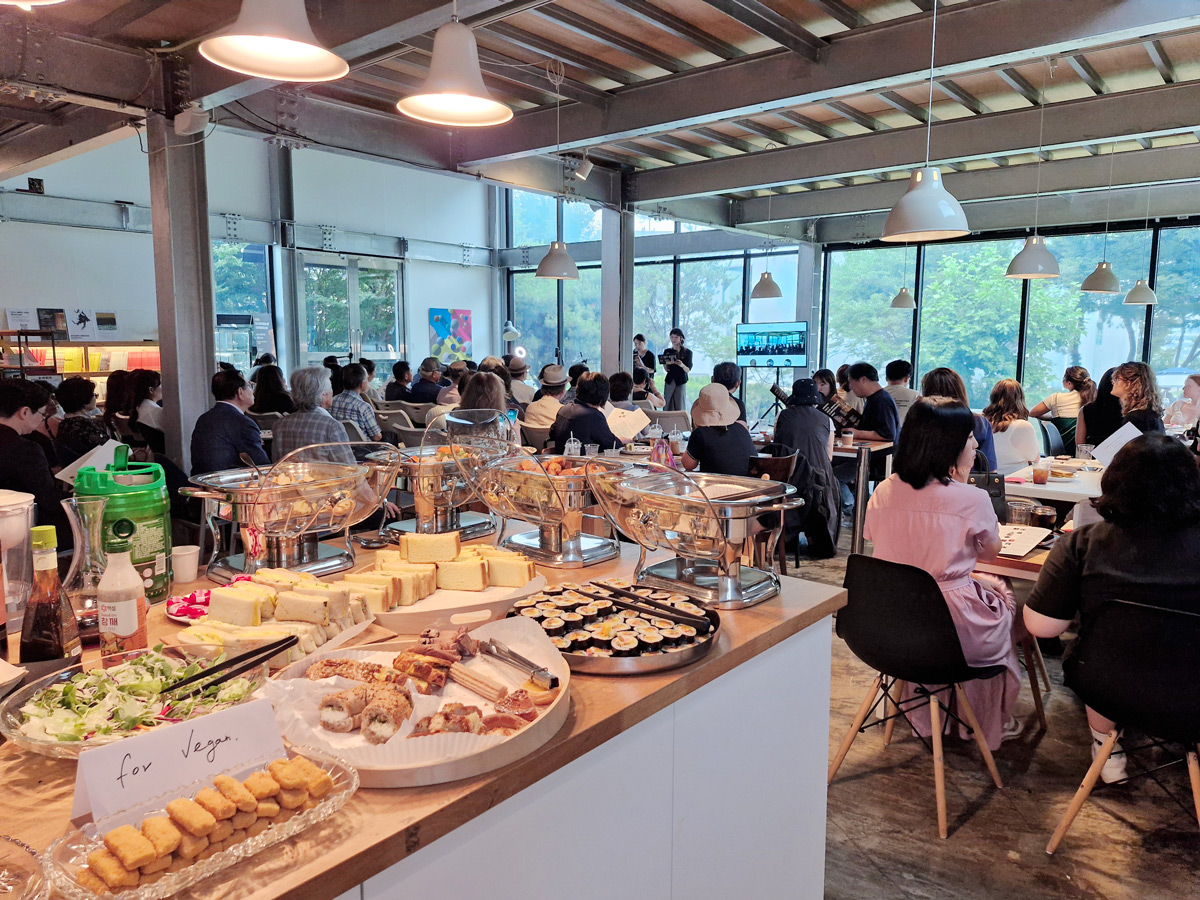
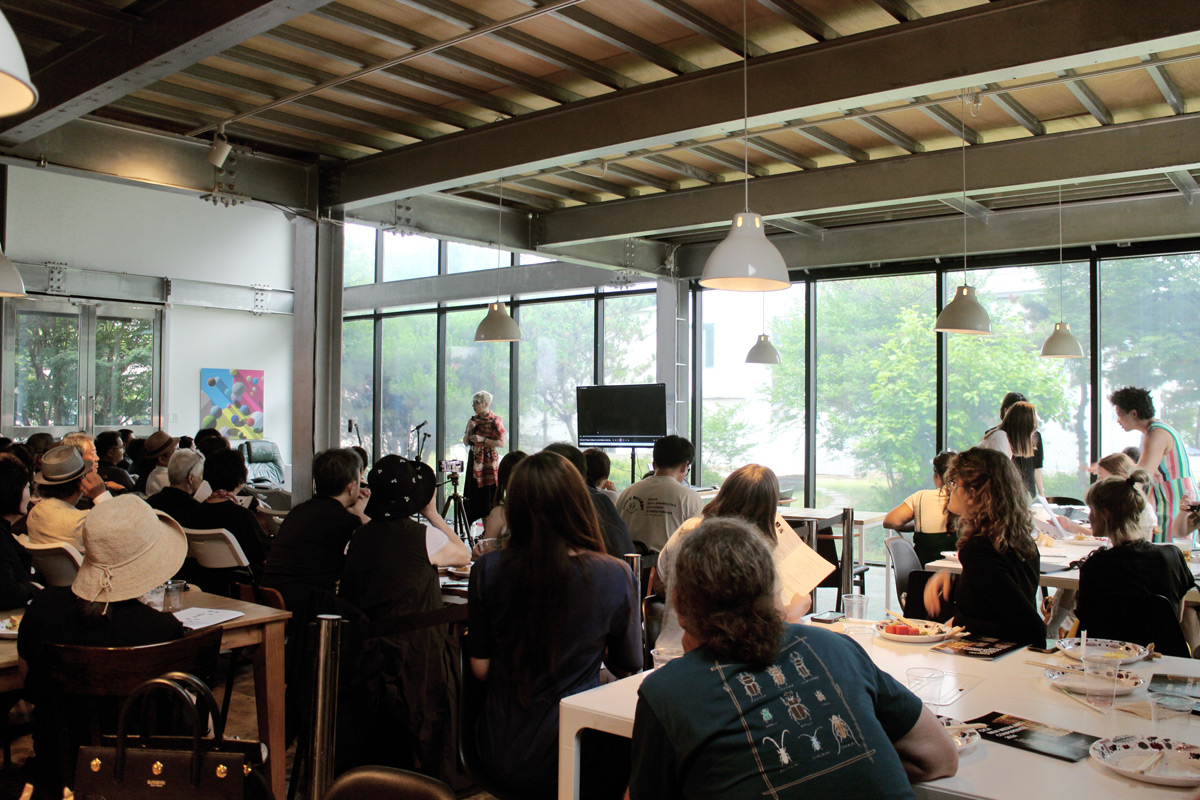

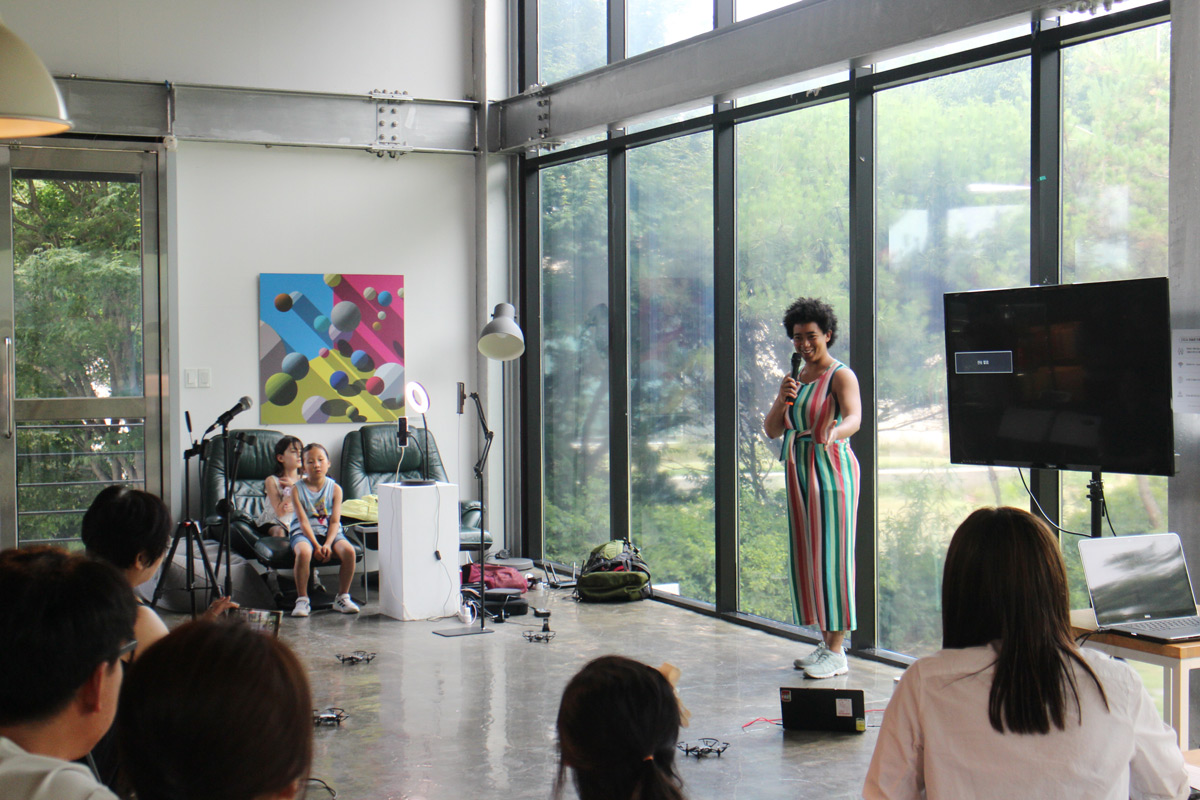

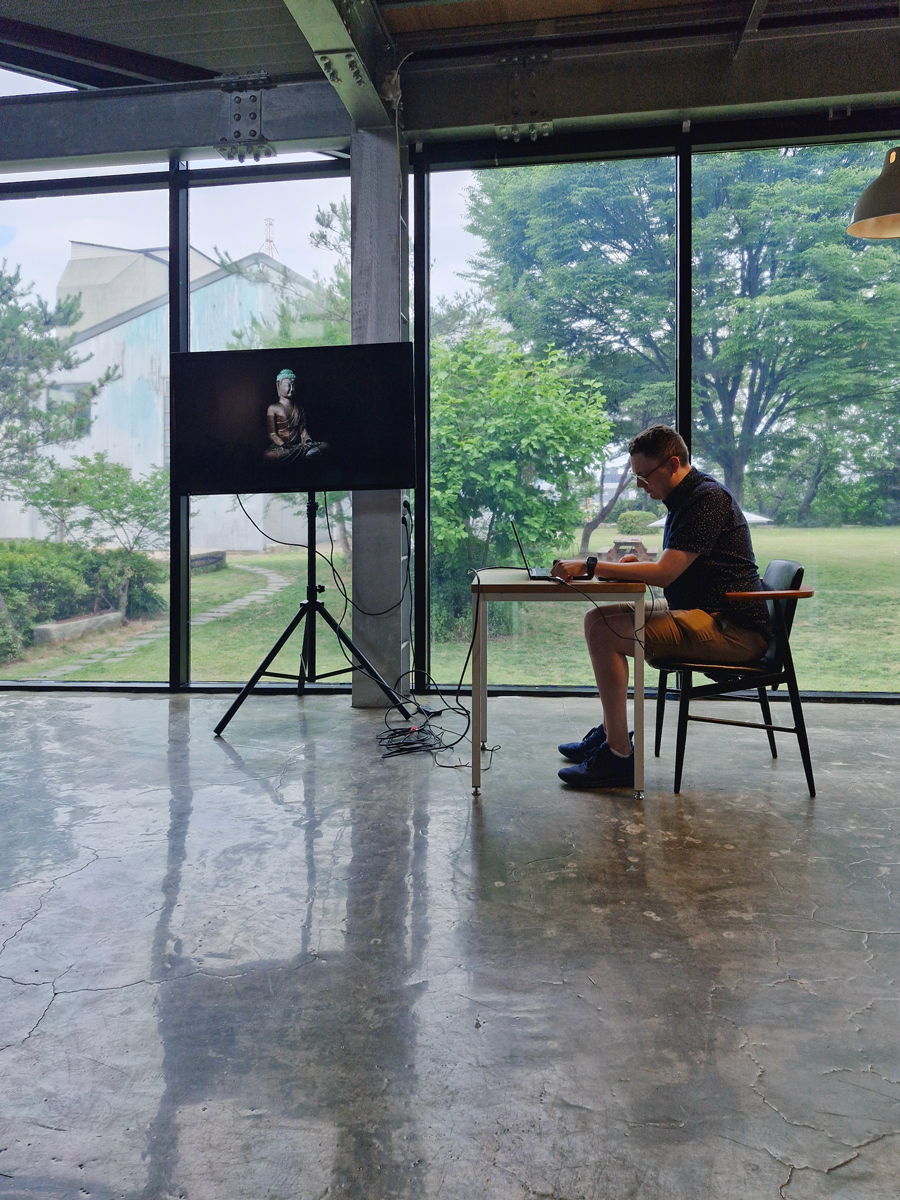
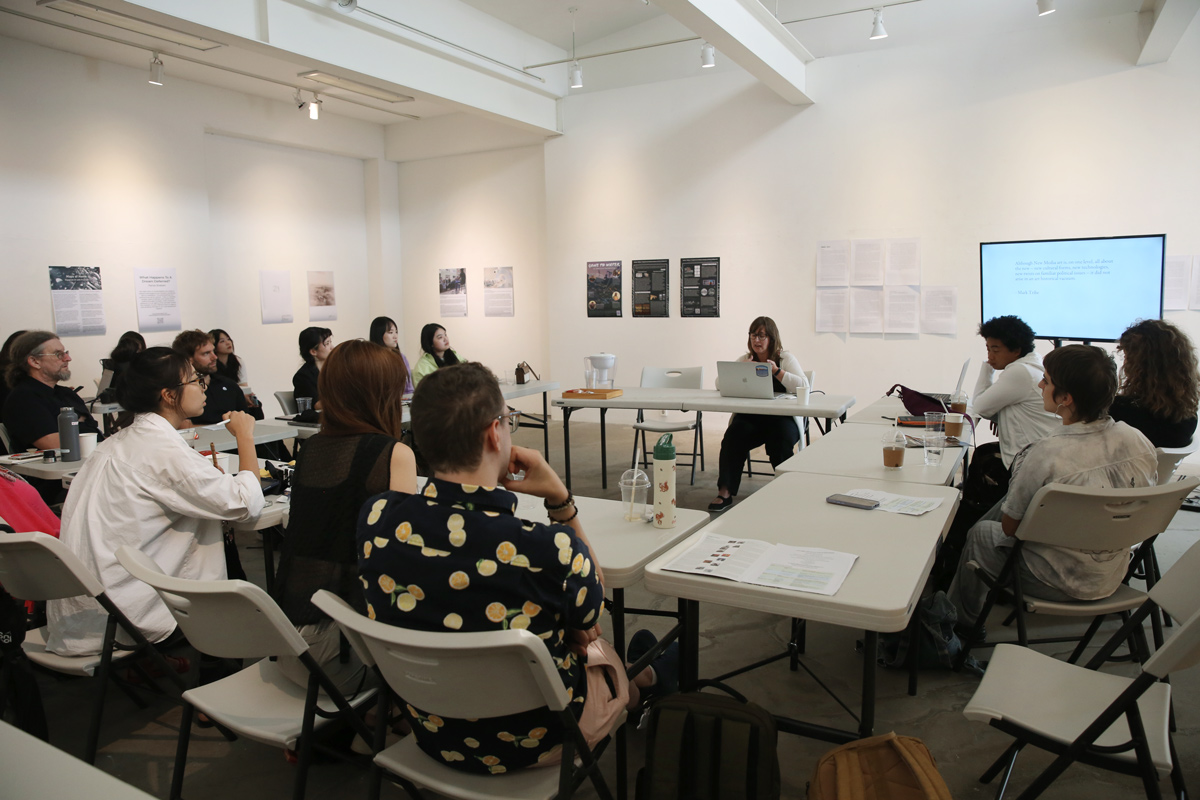
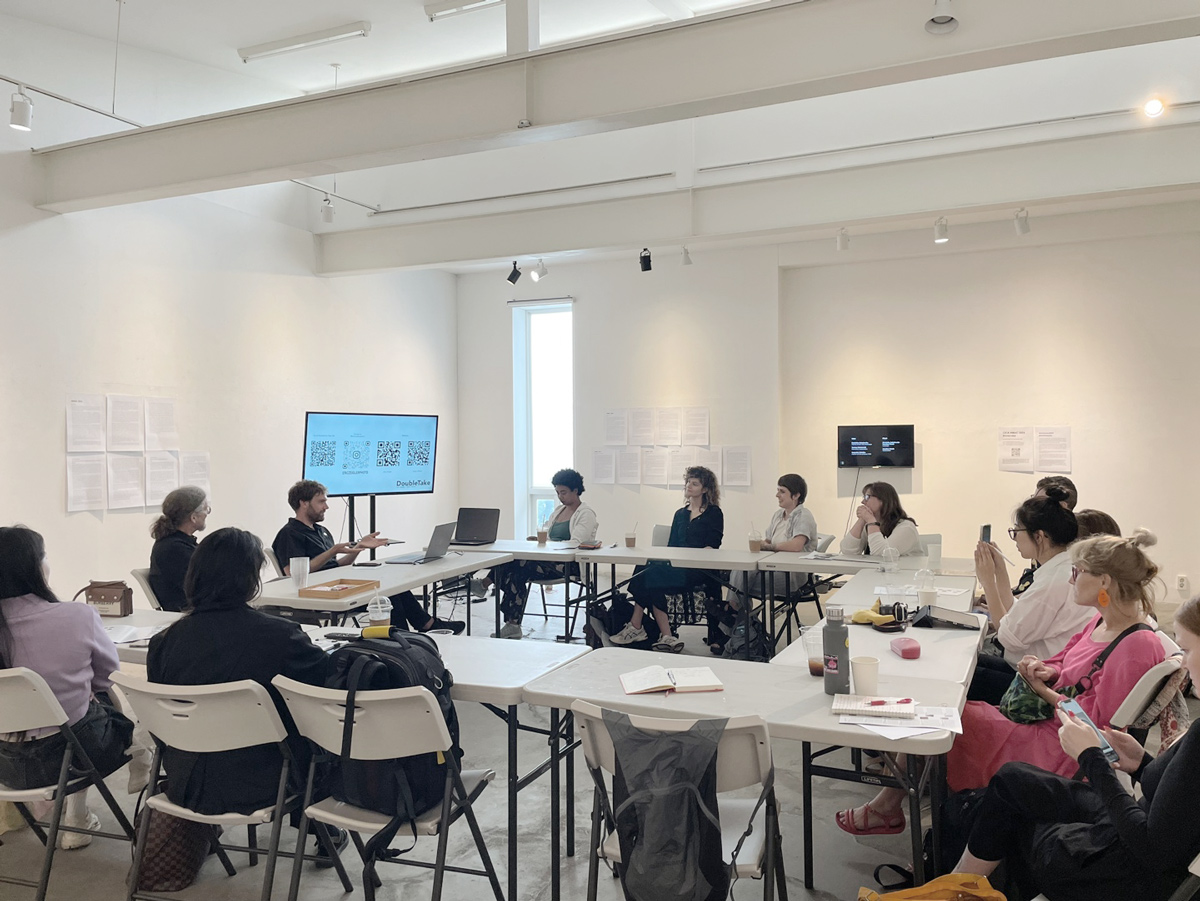
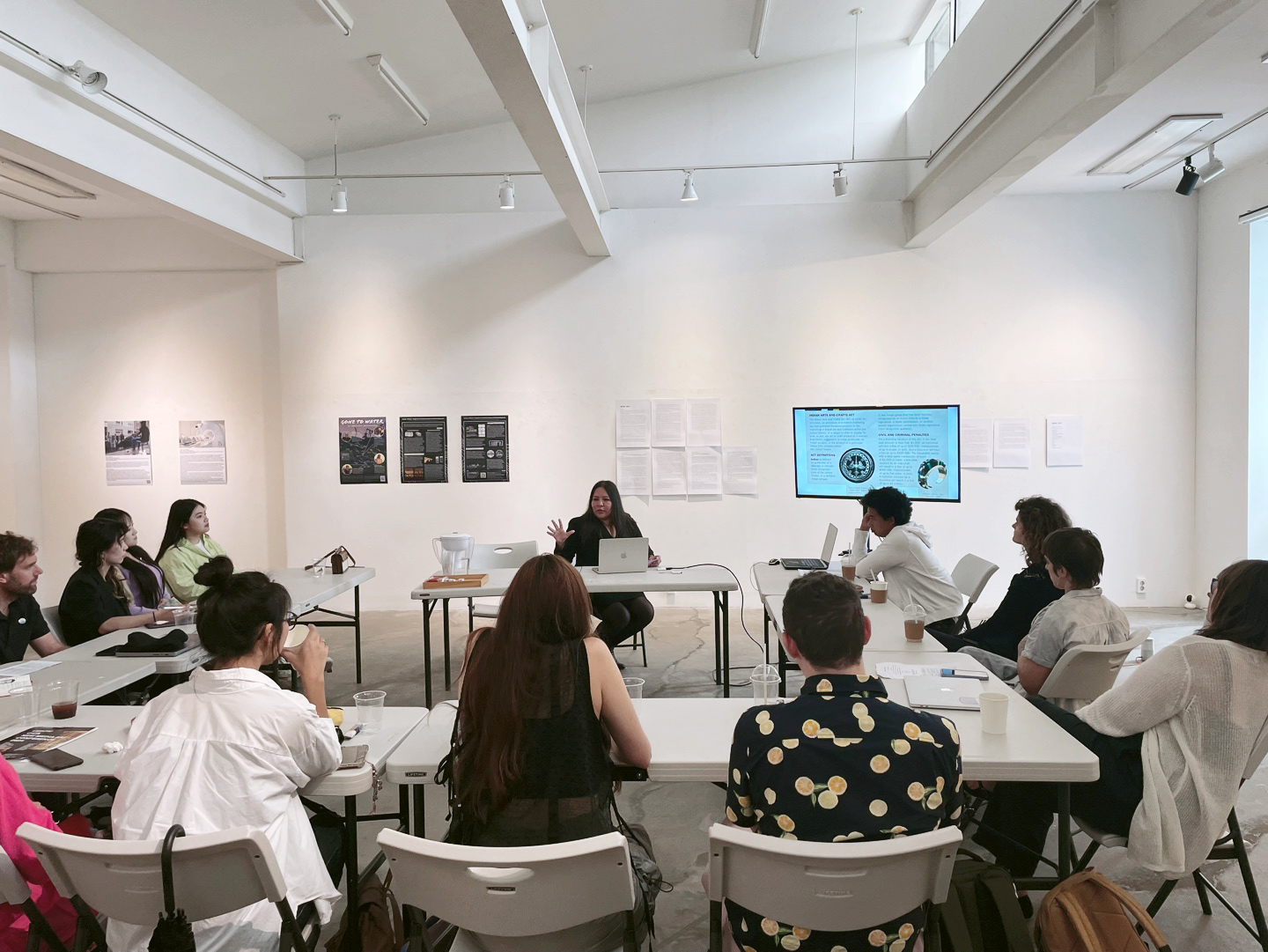
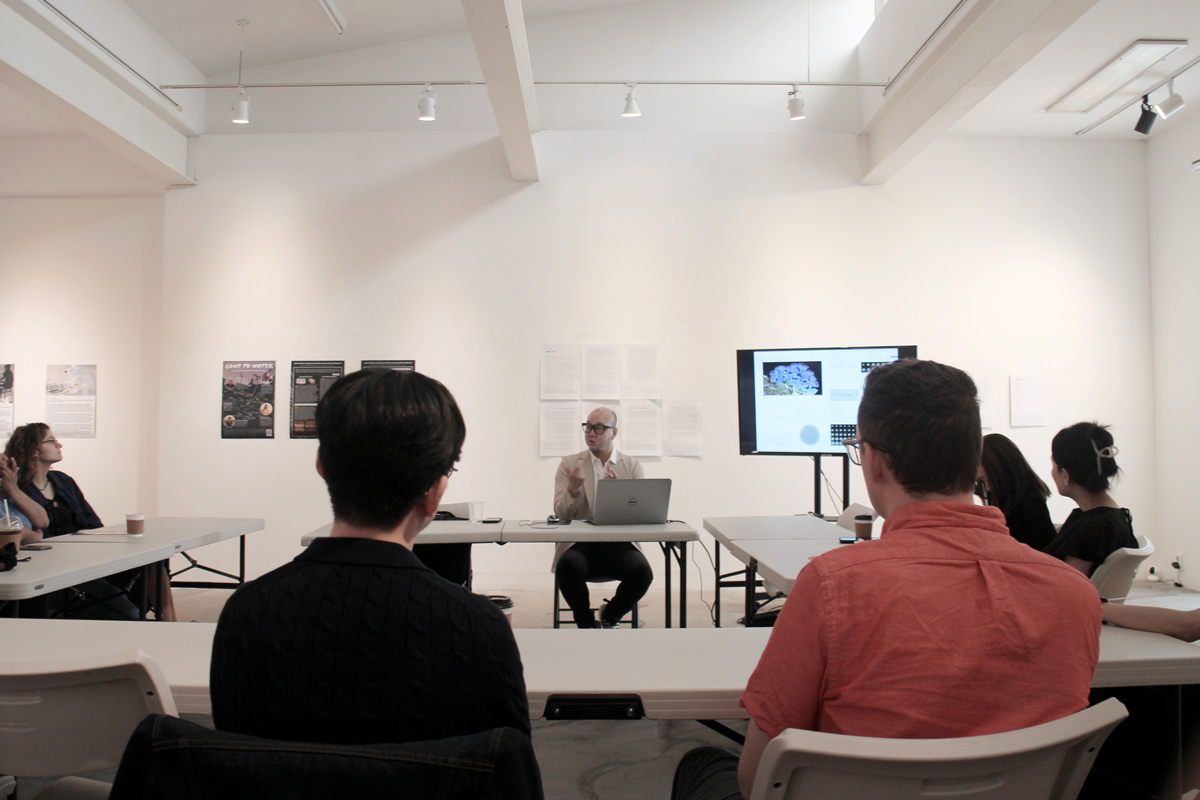
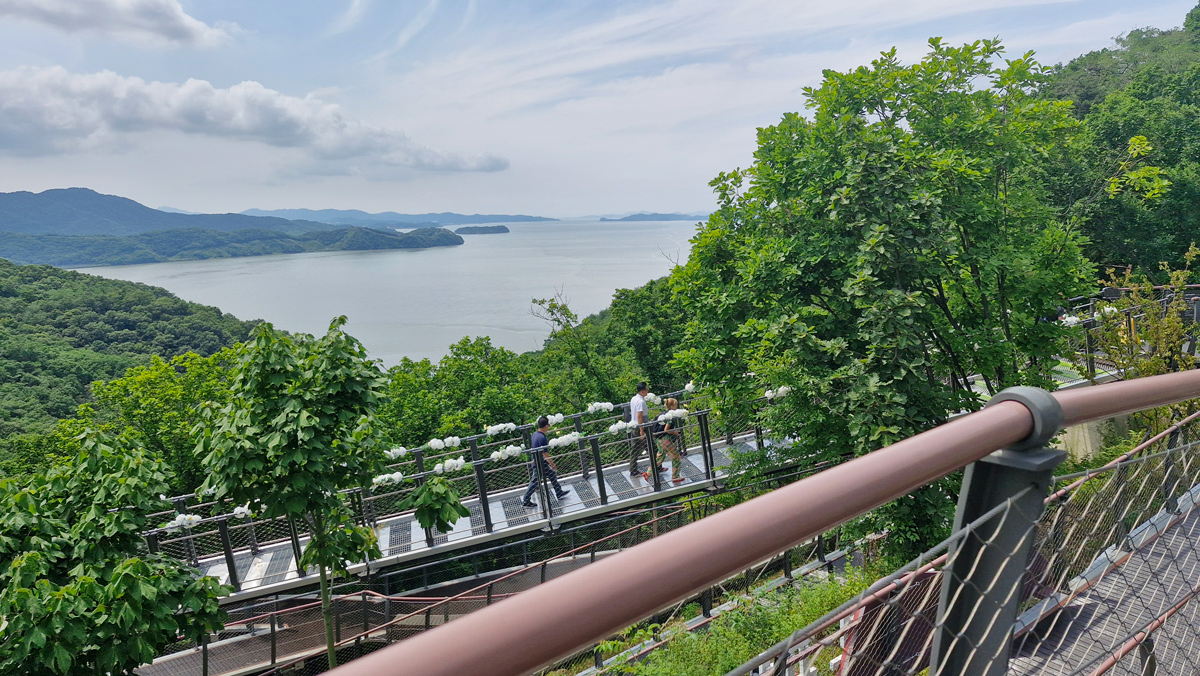

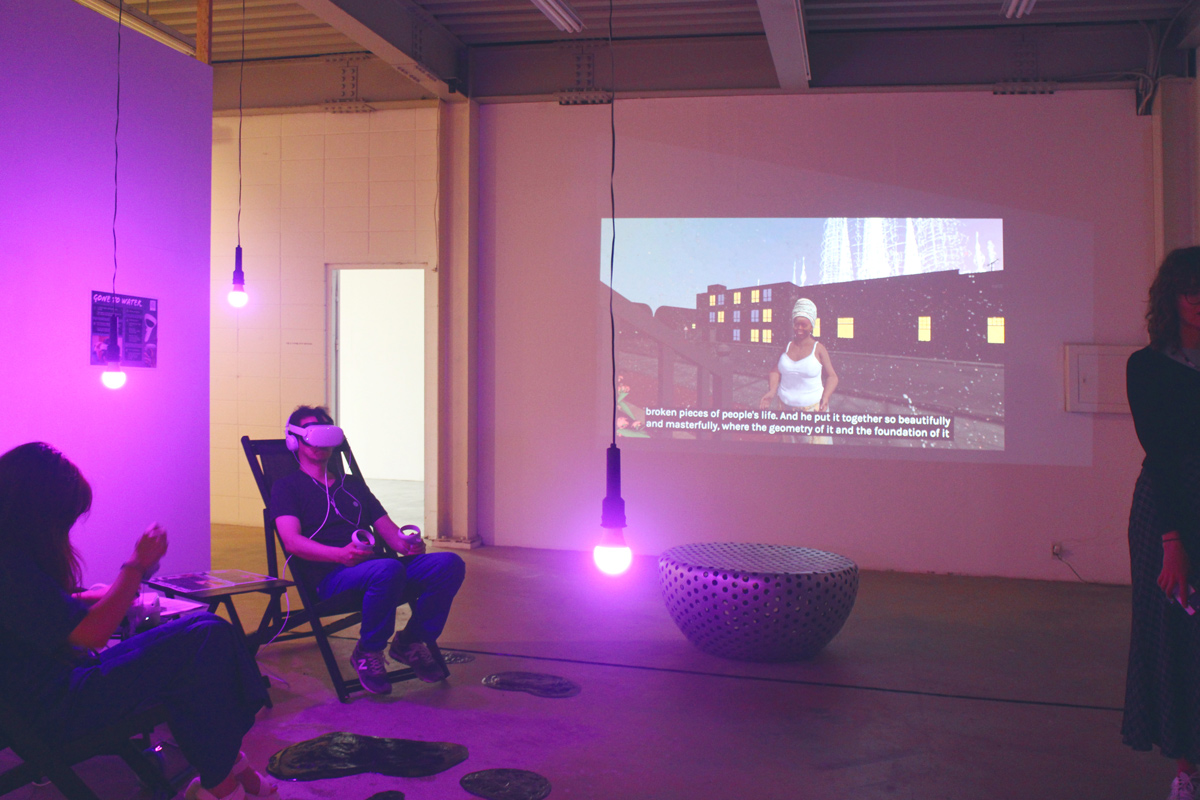
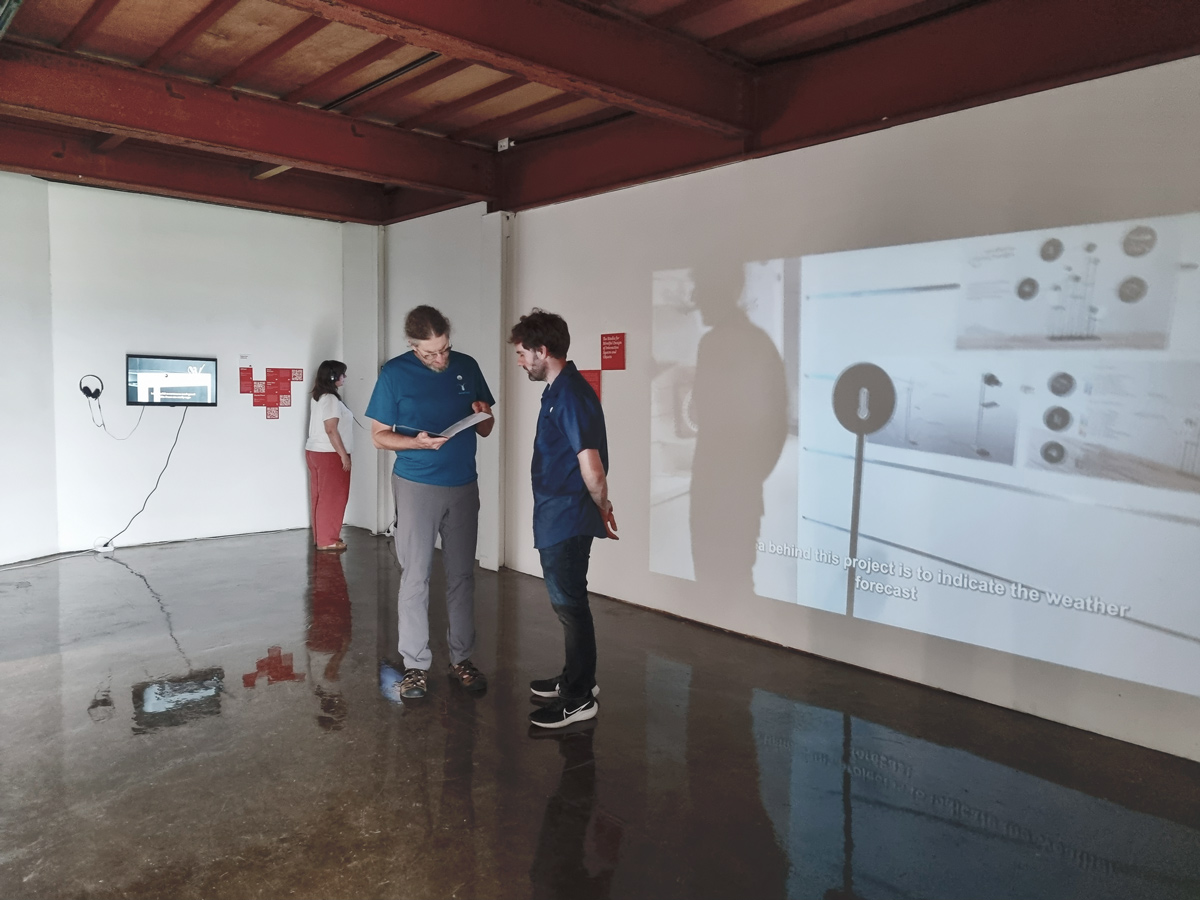


The 8th annual CICA New Media Art Conference (NMAC) 2024
Jiho Jung
The 8th annual CICA New Media Art Conference (NMAC) 2024, held from June 29 to July 1 at the CICA Museum, was a vibrant celebration of digital art in the modern era. Bringing together a diverse group of artists, scholars, and art enthusiasts from around the globe, the event explored themes such as AI art, art and copyright, virtual and augmented reality, social media art, and the intersection of art and the environment.
On June 29, the first day began with an opening event. Many art lovers, PhDs, artists, and professors participated in the event. The artists had the opportunity to introduce their work. At first Dominika Sobolewska is a Polish artist, curator, exhibition designer, academic teacher, and PhD in Fine Arts. She introduced several works under the title “Empathic Design or technological concern for better tomorrow”, all of them interacting with people. There is a study that plants thrive on the right sounds, so she presented a sound therapy device that selects three kinds of sounds and plays them to plants.
Donna R. Charging, who has a BFA in Studio Arts from the University of Illinois at Chicago and will complete her Master of Fine Arts from the University of Louisville in 2024. Donna grew up on the Wind River Indian Reservation in Wyoming. The language of Native Americans is unwritten and exists only in sound, and she represented that language like furniture, and her video work showed furniture as a living language.
After then, performance works have been presented. HyungJun Park lives and works in Berlin and explores interdisciplinary artwork through collaboration with various research institutes. He presented InsideOut, a work in which the audience’s heartbeat is connected to the artist. The audience’s heartbeat was connected to the artist’s and the artist’s physical response was visually displayed. Ahnjili followed with a drone performance.
Ahnjili is a machine learning engineer, Ph.D. candidate, artist, and science communicator currently working at an AI startup that specializes in developing deep learning models for facial augmentation. Her work involves drones that can recognize what the subject is wearing. She used technology that can analyze fashion and determine how revealing it is, gender, culture, etc. The reason why she experimented with this work was inspired by the fact that she heard that drones were being used to monitor whether a woman was wearing a hijab or not.
Next was a performance by artist Yoonmi Seo. Her Project is an Audio-visual New Media Installation art composed of Smart PHONES, WiFi, SELFIE Mannequin, SELFIE Sticks, speaker, Led Lights, digital prints and mornitor. She thought that the moment of taking a selfie is a work that only captures the most perfect image for a moment, so she presented a work that is analogous to being born in space and disappearing into the bubbles of the sea. Afterward, the opening event ended with a violin performance by Nal Yunmi Kim, sponsored by Gimpo Cultural Foundation.
On the second day, June 30, the artists had a session to present there’s work.
Ahnjili showed a variety of her work, and explained the details of her process. In one of her early works ‘Future Wave’ she showed a predictive policing system with her friend and introduced the fashion police and shared the concept of fashion criminal with them.
In another work, she used AI to predict what people would look like after cosmetic interception, and she focused on how to repurpose AI to question whether or not she the first is to inform the public. artists also shared questions about fashion police and crime. Talking their personal experiences as examples, about things like prejudice against certain colors or fashion styles.
Next up were Mingyong and Xuexi, who created animations using AI. Their work explored ‘AI memory’ through the lens of Chinese landscapes and AI art. They originally from Beijing, China, is now Ph.D. student California-based new media artist. They showed their work exploring ‘AI memory’ through the lens of Chinese landscape and artificial intelligence art. their project kind of embarked on with animation. the catalyst for their exploration was narrative depth and the historical significance of this things.
Their work documented the process of weaving past, present, and future through changing landscapes. They also talked in detail about their process, which was created using Ai animation tools and involved a lot of fine-tuning. And sort a data set which was comprising about 2000 elements from Chinese paintings source from public access of major collections and museums across. Like this works They showed a combination of technology and traditional art.
Then Xloi presented “Subconscious Legacies: AI Surrealism, 100 years after Breton.” She is Greek-British writer, researcher, and computational artist. She holds a Master’s degree in Computational Arts from Goldsmiths. In her talk, she introduced the AI generation through the prism of surrealism and its modern legacy, commemorating the publication of Allard Ordinary’s text exactly 100 years ago.
Her works reflects thoughts of the surrealists. As Andrea Breton writes in his Manifesto of Surrealism, automatism is an expression of a functioning for the functioning of thought in the absence of any control exercised by reason exempt from any aesthetic or moral concern. Following this concept, she freely created new associations.
She talked about her work and the process of making it, using everyday objects that are captured and manipulated through 3D scanning to create surreal assemblages.The intention of her work is It’s an invitation to do a double take on the objects that we so recently passed aside these days. Also she had the privilege of exhibiting it last year at the UN he this is G private art exhibition that was happening there in the context. And last year partnered in a group exhibition named Royal Futures at the Max Arts Museum in Germany interactive video works with virtual and augmented reality experience, multimedia installations in the digital world.
The next presenter was Sangwoo Samuel Kim. He earned a bachelor’s degree in history from the University of Michigan and an M.A. from Johns Hopkins University in art history. Kim’s previous research examined artistic localization in sixteenth-century Spain. He also taught courses in Italian Renaissance art history. His presentation, “Of the People, by the People, for the People: Sanja Iveković’s On the Barricades and the Return of the Figurative in Memorial Art,” was a thought-provoking examination of a project Sanja Iveković conceived for the Eighth Gwangju Biennale in 2010, which commemorated the thirtieth anniversary of the Gwangju People’s Uprising.
Kim explained how this piece, titled “On the Barricades,” went against the grain of other commemorative sculptures depicting the Uprising. He contextualized Iveković’s project within the trajectory of how memorial art evolved in the recent past, during which Minimalist sculptures emerged as a formidable counterpart to traditional commemorative monuments.
Kim then went on to demonstrate how “On the Barricades” reclaimed the figurative without undermining the achievements of Minimalist memorial art that preceded it, while also adroitly problematizing how the Uprising had been memorialized in the past.
Then Donna R. Charging who first shared the work on the first day. She curated the show of photography featuring artwork created by different artists from 7 different native American tribes. A lot of different artists coming together and using the medium of photography not to have ourselves be the subject of the photograph, but to use the medium as a means of showing how we see the world. She also emphasized that They are different types of, have different cultures, different languages, different histories.
She showed a screenshot of a brochure that’s available on the US government website that deals. In this screenshot, you can find the definition for Indian as a member of a federally or officially state recognized tribe. She stated the fact that, “However, to meet the criteria for federal recognition, they must demonstrate continuous cultural, political, and familial lineage to establish their tribal distinctiveness apart from the state.”
The next turn was Dominika. She talks about taking empathy, but the title of the session is taking empathy in art and design as an expression of concern for tomorrow. She showed us more details and more different interactiveworks that she presented yesterday. one of them is called ‘can we slow down for morment’, which is a robot writing and erasing a message to slow down a little bit in a world where everything is changing so fast.
another work was physical distance from digital media. because she made a space for digital devices so that she could focus on any task, whether it is studying or working, and this helped her to distance herself from digital media devices that were so close and close to her.
another lamp work is a project which aims to highlight the problem of plastic pollution. It’s an interactive lamp she made as a result of long term project of mine called theacification. and she was working with local communities. it emphasizes that we contribute to the plastic pollution but also to the fact that we are becoming plastic because as you know, scientists just already found the traces of plastic memory bodies .
The following is Love Death Design team. Love Death Design is a creative studio that urgently promotes art as a conduit for social change, co-founded by artists Katherine Ross and Marin Vesely, who are currently Fulbright Art and Research Scholars in Brazil; Katherine Ross, currently an Arts+Science Fellow at the National Oceanic and Atmospheric Administration; and climate scientist Nick Wilson, whose research was recently published in the journal Geophysical Research Letters.
They discussed their work “‘Going to the Water’: Immersive Activism, Environmental Justice, and the New Media Landscape” project, a VR immersive documentary that explores urban oil production in Los Angeles’ Tongva Land and its detrimental effects on community health. The team sought to challenge the common perception of LA only through the lens of Hollywood glamor to shed light on the serious health risks faced by residents living near urban oil drilling sites. These risks include exposure to contaminated air, water, and food, and absorption of contaminants through the skin.
Their work amplified the urgent call to action advocated by community organizations like Water is Gone, urging a shift away from fossil fuel infrastructure toward a sustainable energy system. This transition prioritizes both the preservation of natural landscapes and the health and safety of individuals residing in areas affected by environmental injustices.
To authentically convey these experiences, the team undertook several preparatory steps, including site visits, community engagement, and extensive interviews with local residents, activists, and regional experts. They meticulously utilized existing data, research, literature, and artistic expressions to ensure a nuanced and accurate portrayal of the issues at hand.
Then Eric Zeigler and Aaron Ellison’s works “DoubleTake” showed. Eric Zeigler is Assistant Professor of Art at the University of Toledo. aron Ellison is a Boston-based photographer, sculptor, writer, and Senior Research Fellow Emeritus in Ecology at Harvard University. They working together, Eric and Aaron explores unknown worlds beyond our current understanding.
In most of the images, they’re standing next to the camera, they’re hiking together, they’re making decisions together, and they know enough about what each other wants that they can go out and see it and make an image and still get in the set.
The process by which they take photographs is highly detailed. They show the types of camera lenses they use, adjust the camera’s exposure, the use of the ultraviolet spectrum, which has shorter wavelengths than the visible spectrum, and what effects these adjustments have, sometimes showing landscapes that were sometimes didn’t intended, because our eyes see “color,” but not ultraviolet and infrared light. They show us two comparable photos from different landscape photography efforts, showing how the camera can manipulate the way we see the world. And these images, taken in the upper peninsula of Michigan, have a different spectrum than we’ve seen before. And what’s really worth talking about is the way they collaborate with each other.
Sam C. Shin showed his work “The Sublime & the Profane: Buddhism & New Media Art.” Sam C. Shin is an audiovisual composer and creative coder, whose creations integrate music and technology to delve into the impact of technology on music production and consumption. Currently, he is pursuing a Ph.D. in Digital Composition at the University of California.
He showcased several sound pieces, one of which was ‘Ering Problems of the Mind,’ an iterative audiovisual installation that investigates the experience of long-form and short-form media through the prism of creativeism and disturbances. The concept behind this piece revolves around exploring these media experiences through the perspectives of Buddhism and contemporary media. The inception of this project stemmed from his contemplations on peace.
Shin also expressed that Korean contemporary art had significantly inspired him, leading to discussions about various artists. Additionally, he shared his personal experiences regarding audience engagement from the viewpoint of a spectator. Furthermore, he conveyed a deep concern about the current media formats, which are being consumed excessively in our society.
Belinda Haikes presented her series “The Unbodied Landscape” at the conference, beginning with a personal narrative that illuminated the significance of these landscapes in her life. Her artwork invites contemplation on the unintended consequences of technological progress, exploring how traditional technologies are reinterpreted in contemporary contexts. This project is deeply intimate, intertwining personal memories and dreams with broader historical narratives.
Comprising 16 photographs and eight graphite stencil drawings, “The Unbodied Landscape” examines the enduring impact of America’s nuclear development on both its physical landscapes and communities. Haikes’ photographs, captured on irradiated film during her journey along I-70 and I-25 to the Trinity test site at White Sands, New Mexico, depict both the stark beauty and unsettling repercussions of the nuclear era. The accompanying graphite drawings provide stark numerical data: the count of individuals affected by nuclear tests, total tests conducted, and extended periods without American nuclear testing.
At its core, Haikes’ work explores the complexities of immigration and underlying societal conflicts amidst the backdrop of nuclear history. Her presentation at the conference underscored these themes, highlighting the intersection of personal experience and historical reflection through visual storytelling.
Lastly Narae Kim, a Seoul native now residing in Los Angeles with an MFA from the California Institute of the Arts, is acclaimed as a multi-award-winning visual artist renowned for her contributions to physical and virtual spaces. Her portfolio includes participation in international theater, film, and immersive experience projects. Her original art, animation, and projection mapping have been showcased at prestigious events like the Cannes Film Festival, Busan International Film Festival, and Prague Quadrennial.
She detailed About the platform she is responsible for as Chief Creative Officer. The mobile health platform employing groundbreaking VR experiences to alleviate anxiety and pain. She gave examples and talked about how art can potentially change someone’s life or improve someone’s life. She highlighted partnerships with NIH and the University of Pittsburgh for clinical trials, along with current Medicare coverage in Florida and Michigan, with plans for expansion in California and Texas. Kim underscored how these interventions improve patient well-being and reduce medication dependence, illustrating the transformative impact of art in enhancing lives.
As the second day’s sessions came to a close, artists showcased their artworks using various techniques and mediums. It was a lively gathering filled with enjoyable conversations and insightful questions. This venue provided a meaningful opportunity for artists from around the globe to receive feedback on their works and to inspire one another.
On the last day of the conference, 1 July, the session started with a presentation by Dae Song Lee.
Dae Song Lee, a Royal British registered architect and an artist, currently serves as an associate professor at Yonsei University. Declaring himself a New Materialist, he has founded the Design System Lab, a cutting-edge research initiative focused on the experimental exploration of material systems and computational beings.
His presentation was titled “How forms Evolve?” and he shared his approach to literally creating architectural forms. In one of his various works, he showed a model that took motifs from the shape of bones to create its appearance, while in another, he developed a model by focusing on the logical systematicity of flowers and organisms rather than their beautiful appearance. For example, the brilliant colours and patterns of poison dart frogs were studied intensively, detailing the process of creating multiple individuals. Other artists were also interested to see how the patterns and shapes were used to create physical forms.
Next up was Deniz SAK. She is a Multidisciplinary Artist, Designer and Storyteller from Istanbul. Following her master’s degree in interior design from NABA, Nuova Accademia di Belle Arti Milano, she moved to United States for her art studis in year 2016. She took part in several exhibtions as an artist and a designer, incluking MAXXI Rome, Triennale di Milano, Fabbrica del Vapore, Milano Design Week, Ionion Aquarium and Ionion Center for the Arts and Culture, both solo and in groups. She had been purposing her artistic practices over 10 years, in various mediums; including Video Art, Short Film, Photography, Mixed Media, Painting and Illustration, studying mainly two concepts: Attachment & Detachment and Change & Balance.
In this session, she showed us her 30-minute short film. There are so many different landscapes and scenes in the film. She explained that when she makes a film, it’s more about the narrative, rather than making a plan and just deciding where to go. She said that we forget important things like where we come from and where our real home is. connection with where we actually come from where it is actually our home living in the city we’re getting accustomed to technology, AI and everything that’s making our lives easier but we’re actually losing what we are capable of doing . She captures these stories in the film in an abstract way.
The following was presented by Lihong Liu. Lihong Liu is an artist and researcher based in London. She was awarded the degree of Doctor of Philosophy from the University of the Arts London in 2023, her research focuses on the ideas of déjà vu, the unheimlich, the experience of displacement, the issue of absence and presence, the idea of home, as well as the meaning of everyday objects. Her work spans various mediums, including drawings
Her works based on exploration of her room during COVID-19 in 2020, and tells the story of her journey into room. She explained her work by dividing it into four categories, Notion of Home During the Pandemic, Discovery of Special Objects, Painting Series, Impact of Virtual Communication.
She talked about being away from her family during the lockdown and how she stayed connected, And discussed the diverse definitions of home, ranging from a place of security and familiarity to one of fear and displacement. She highlighted how virtual communication became crucial during lockdowns. as well as the meaningful objects that have a presence in her home, including her series of paintings.
Last session was Liliana Gonzalez-Jarquin’s presentation. During the pandemic, Liliana has been dedicated to her project, Micro-Nude, which has provided her with various avenues to understand those around her. This endeavor has allowed her to explore cyber feminism, photography, and social media in her own unique way. Currently pursuing an undergraduate degree in art history at Université du Québec à Montréal, Liliana values individuals who share insights into art and societal equity.
She presented ‘The Micro-Nude Project’ with four different chapters. Chapter 1 explains how she approaches technology with her username and cyberfeminism, while chapter 2 describes her screen time during the pandemic on social media and introduces her Micro-Nude: Pixel: Introduction to Liliana’s project which involved creating pixelated, hard-to-see images as a form of control over her body. In Chapter 3, Glitch, she explores algorithmic surveillance, how algorithms monitor and censor online content, especially nudity, and how she collaborated with various artists to create micro-nudes of it. In Chapter 4, Data data and analyses of images to detect nudity using algorithms, which led to the removal of nude and sexual content from Facebook and Instagram, with specific figures. She meticulously analyzed data on image recognition algorithms, revealing their high proactive detection rates for nudity-related content, thus illuminating the broader implications of surveillance on digital freedoms and privacy.
Just like yesterday, many discussions and ideas were exchanged. The artists were all passionate about new media art and were particularly interested in the way and processes of their use of technology. With the enthusiasm of all the artists and the intersection of technology and creativity, CA NMAC 2024 came to a successful conclusion. The diverse perspectives and pioneering works presented over the three days highlighted the transformative power of new media art in today’s digital age. The ideas and connections formed at this event will undoubtedly shape the future of art and culture in exciting and unexpected ways.

